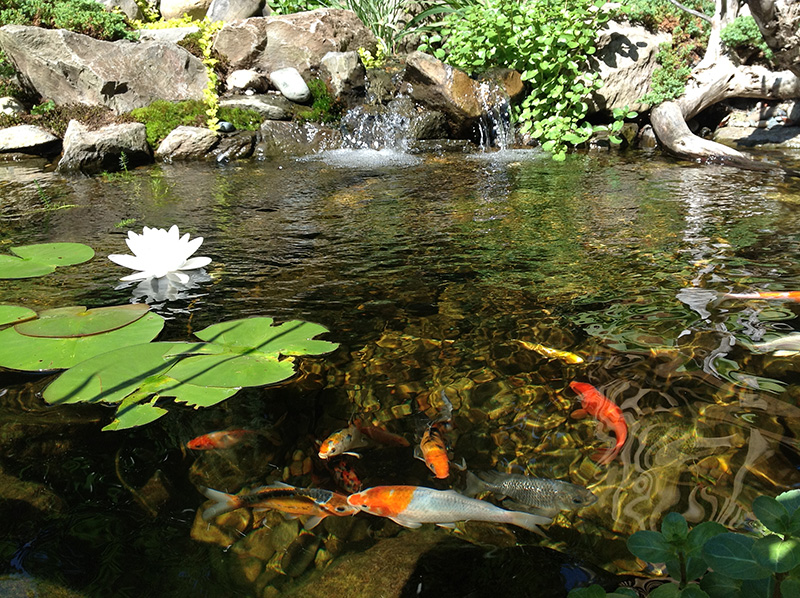What is Happening to My New Pond?
You’ve just created the back yard of your dreams, complete with an amazing new pond full of beautiful Koi fish, and it appears as though it’s all gone horribly wrong. Fear not! This is actually quite common. New Pond Syndrome, or NPS is characterized primarily by uninhabitable or discoloured water, diseased fish, and ammonia spikes. The most common cause of NPS is a premature addition of too many fish, resulting in a breakdown of your bio filtration.
It’s important not to confuse NPS with green pond water, which in many cases is a healthy part of the natural water cycling process. The key difference between these two phenomena is the effect on the fish – monitoring your fish health and water quality will prevent any misdiagnosis of NPS.
What Should I Do About It?
First, the pond has to cycle and to do that successfully can take anywhere from four to eight weeks. If everything is going right, your pH level will begin to stabilize and drop ever closer to the optimal 7.5.
with a minimum of 60% surface coverage. The plants will decay and release other agents in to the pond, thus creating a beneficial environment for fish after 2-6 weeks while the pond stabilizes further. Once the pH is around 8-8.2 and no higher 8.5 you can start considering the addition of fish. The proper pH of a mature pond should be around 6.5 to 8.5, with constant but little fluctuation.
The pH will continue to reduce as the days go on. When you want to add fish, do it gradually. Maybe just six fish to start and then test your pH again… if everything looks good then you can add more. You may also want to start with more inexpensive fish and graduate to larger koi in year two once the pond has established itself.
- Due to the chlorine and chloramine in city water you should use a dechlorinator of some sort. Letting your pond sit will not rid it of chloramine. Always keep a dechlorinator on hand and remember anytime you add water to your pond you must add it as well.
- Also be sure to have a floating thermometer on hand as it’s helpful to know the temperature of your pond water through the seasons. Bacterias (present in most water treatments) need a water temperature of at least 15 C to proliferate.
- Feed your fish less. Most people like to interact with their fish which inevitably means feeding them… and feeding them and feeding them. Find a high quality fish food that can be easily digestible and “used” by the fish as opposed to lower quality foods that result in more waste. Look for foods that have quality ingredients, contain multivitamins and stabilized vitamin C. Once per day during the summer should be fine, once every couple days with a low temp food in Fall/Spring and not at all during the winter months.
“In nature, fish stocking levels are much lower than in our artificial environments. When stocking levels become too high, fish populations are brought under control by predation, diseases, stunted growth or other mass die-offs. In our artificial environments, we often forget that stocking levels are important, and just as in nature, there will be a tendency for equilibrium to become established over time. Unfortunately for our pet fish, “equilibrium” usually means disease or death. Eliminating excess fish stock brings the environment into a state of equilibrium. A minimum of 100 to 200 gallons per fish is adequate” – Ponds and Water Gardens

Recent Comments